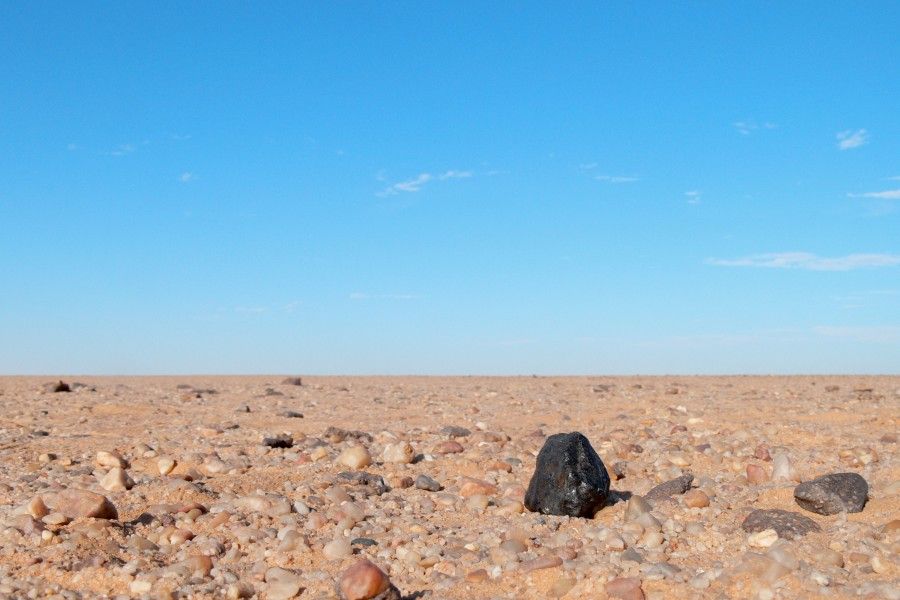
On October 7, 2008, an 80-ton asteroid (2008 TC3) entered the Earth's atmosphere and exploded into hundreds of smaller meteorites about 23 miles above the Nubian Desert in Sudan.
These meteorites—referred to as Almahata Sitta—belong to a rare type, known as ureilites—rocky meteorites with a unique mineralogical composition that contain diamonds.
According to a new study published in the journal Nature Communications, these diamonds originate from one of the early solar system's lost planets, providing evidence for a hypothesis which describes how large proto-planets formed the basis of the terrestrial planets in the solar system today.
Planetary formation models suggest that in the early solar system, the terrestrial planets—Mercury, Venus, Earth and Mars—were formed after the gradual merger of tens of proto-planets in a series of high-energy impacts. These proto-planets varied in size from those as small as our moon today to those as big as Mars.
While no remnants of these proto-planets have ever been found, scientists have long thought that ureilites could be relics of them. However, until the latest study, no evidence from previously examined ureilites could show that they did, in fact, originate from a proto-planet.
A team of scientists led by Farhang Nabiei from the École Polytechnique Fédérale de Lausanne in Switzerland examined tiny crystals embedded within diamonds in the Almahata Sitta meteorites using a technique known as transmission electron microscopy—which creates an image of a specimen by beaming electrons at it.
The microscopy results showed that these diamonds must have been formed at pressures above 20 gigapascals. This indicated to the scientists that they originally formed inside a planetary body ranging in size between Mercury and Mars, suggesting the ureilites were, in fact, the last remaining remnants of one of these lost planets.
"This is the first compelling evidence for such a large body that has since disappeared," the authors wrote in the study.
"Mars-sized bodies (such as the giant impactor that formed the Moon) were common [in the early solar system], and either accreted to form larger planets, or collided with the Sun or were ejected from the solar system. This study provides convincing evidence that the ureilite parent body was one such large "lost" planet before it was destroyed by collisions."
Uncommon Knowledge
Newsweek is committed to challenging conventional wisdom and finding connections in the search for common ground.
Newsweek is committed to challenging conventional wisdom and finding connections in the search for common ground.
About the writer
Aristos is a Newsweek science reporter with the London, U.K., bureau. He reports on science and health topics, including; animal, ... Read more
To read how Newsweek uses AI as a newsroom tool, Click here.








